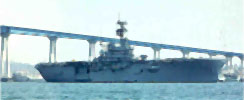Cognition in the Wild Ch. 3: "The Implementation of Contemporary Pilotage"
Theme of the reading
This chapter continues the analysis begun in Chapter 2. Chapter 2 presented the computational level description of navigation (which applies to all forms of navigation) and highlighted the differences between the representational assumptions of Western navigation and Micronesian navigation. Chapter 3 describes the implementation of navigation computations on the ship. It shows how navigation tools provide physical devices that can represent and manipulate the constraints of the navigation problem. A key concept presented in this chapter is the idea that a single computation, determining speed from distance traveled in a set amount of time, for example, can be performed many different ways. Each way of doing the problem implies the use of a different combination of internal (mental) and external (physical) resources.
Getting ready to read
Definitions:
Reading
Orienting questions and issues to keep in mind:
Computations are accomplished by the propagation of representational states across a series of representational media. How does this happen?
In what sense does the alidade implement situated seeing?
What does it mean to say that the implementational level of the navigation system is the computational level description for the individual watch stander?
Why is it misleading to say that cognitive artifacts amplify cognitive abilities?
What sorts of cognitive advantages are provided by precomputation? (pp., 164-169)
|

